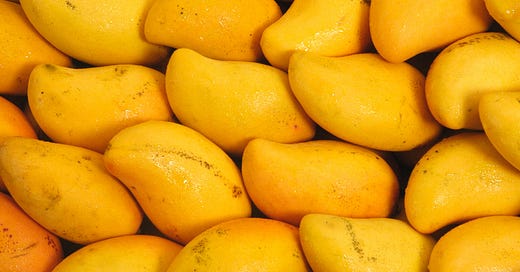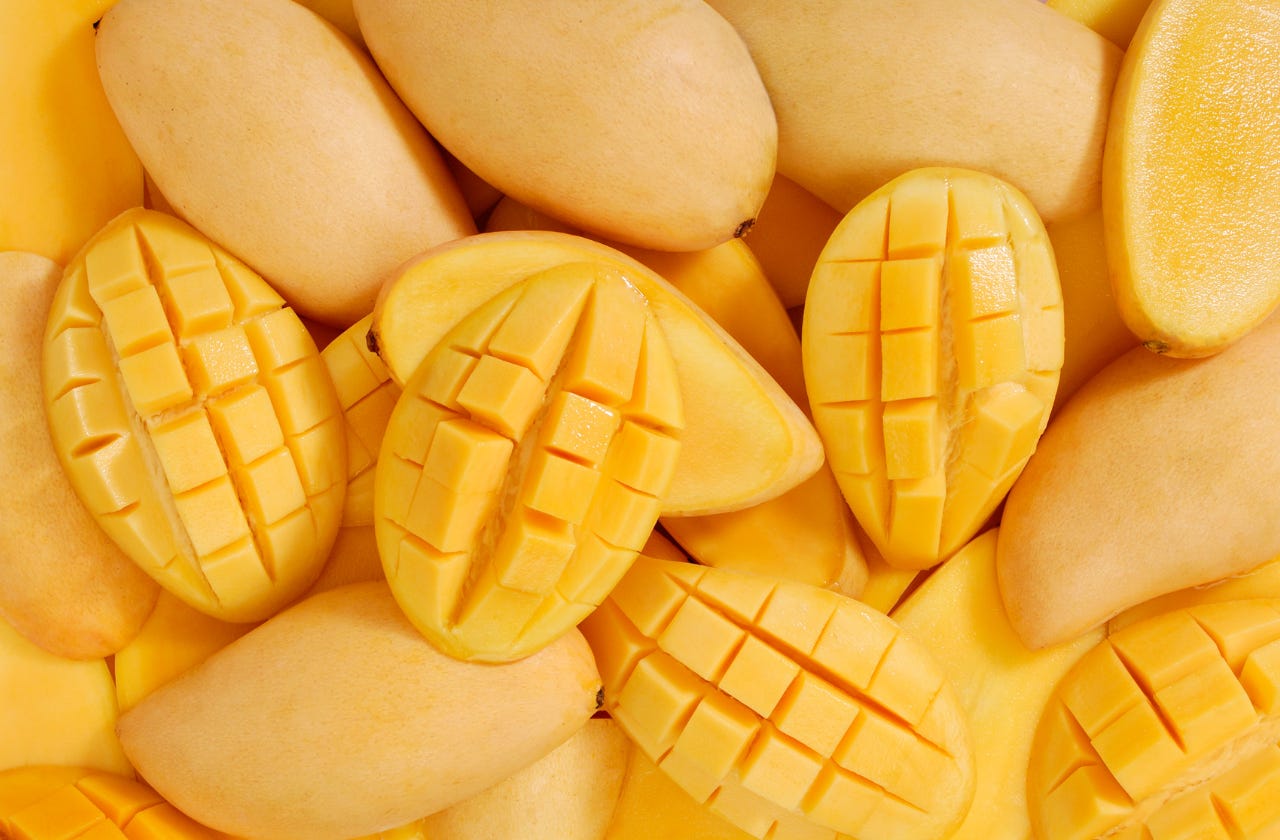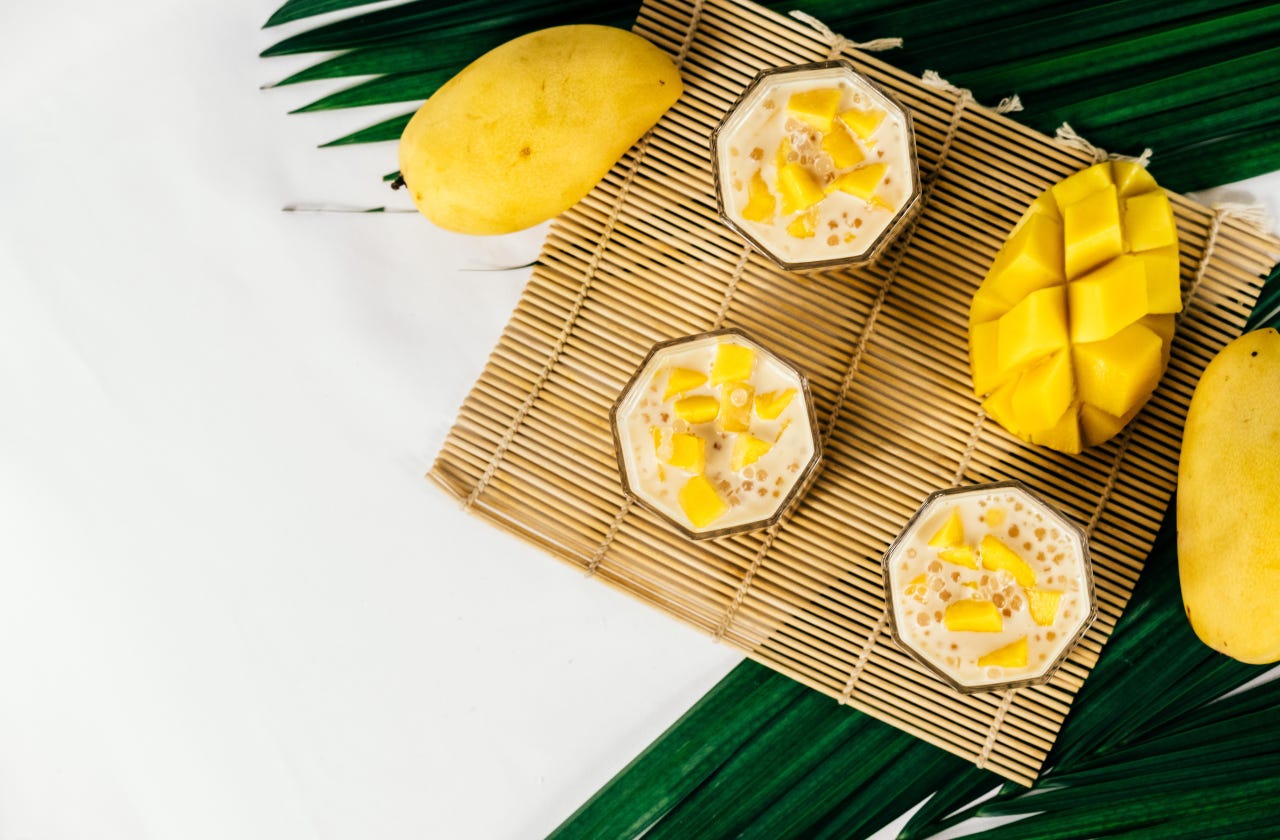The Philippine Mango
Exploring the taste, tradition, and pride behind the world’s sweetest mango.
One of my most enjoyable eating moments is when I’m biting into a Philippine mango – sweet, juicy, and ridiculously satisfying. Each bite of the plump and velvety flesh practically melts in my mouth, exploding with a sweetness so intense it’s borderline unfair to other mangos.
It’s so smooth with none of those stringy textures you get from other varieties. The wave of nostalgia that comes with it makes for a near-perfect gastronomic delight. It’s the flavor of home, family, and sticky fingers. And no matter where I am in the world, a taste of the Philippine mango, in any form, instantly brings me back.
A Guinness Special
The Philippine mango is the fruit that truly captures the essence of the nation - one that embodies the warmth, sweetness, and vibrancy of the Philippines and its people. Just like how Filipino hospitality is known for being genuine and heartwarming, the mango’s rich, golden flavor reflects the country’s natural abundance and tropical beauty.
Known for their distinct sweetness and buttery texture, the Philippine mangos are grown across different parts of the country. With over 1,000 varieties, there’s no shortage of flavor and diversity. The most famous of them all, the Carabao mango (also known as the Manila mango), steals the spotlight.
In 1995, the Guinness Book of World Records recognized the Carabao mango as the “world’s sweetest mango”! An easy choice since it has the perfect balance of honey-like sweetness and just a hint of tanginess, making every bite a refreshing treat.
What makes them special? It’s a combination of climate, soil, and careful cultivation. The Philippines' warm temperatures, abundant sunshine, and fertile ground create the perfect environment for mango trees to thrive, with the peak season of harvest typically running from March to June.
A Fruit Worth Celebrating
In the Philippines, mangos are so beloved that they even have their own festival! The Guimaras Manggahan Festival (or Mango Festival) is an annual almost month-long food festival held in the month of May to celebrate the province’s bountiful harvest.
This event features mango-eating contests, cooking demonstrations, parades, performances and mango-themed exhibits. Guimaras, an island province located in the Western Visayas region, is famous for producing some of the sweetest and most fragrant mangos in the world that it’s now recognized as the “mango capital of the Philippines”.
A Filipino Staple
Mangos are ubiquitous in the Philippines - from markets and street vendors to fine dining restaurants and roadside fruit stands. Not only are they easy to find but they can also be enjoyed in so many ways:
Eaten fresh: Often sliced and served as a simple yet satisfying dessert.
Dried mangos: A popular export product, especially loved by tourists.
Mango shakes and smoothies: A must-have for cooling down on a hot day.
Mango sticky rice: A Filipino twist on the famous Thai dessert.
Green mango with bagoong (shrimp paste): A tangy, savory snack that’s a favorite among locals.
Mango float: A creamy, no-bake Filipino dessert layered with graham crackers and whipped cream.
Best Way to Enjoy
There’s no wrong way to eat a Philippine mango, but if you want the purest experience, just chill it in the fridge, slice it open, and scoop out the golden flesh with a spoon. Or if you want the raw approach – peel it off with your bare hands, take a bite and bask on the delight. Some pair it with sticky rice or drizzle it with condensed milk, but the best way is to enjoy it as it is – where every bite in its purest form is a tropical treat.
Forever Personal Favorite
I’ve tasted mangos from different parts of the world - Mexico, India, Thailand, and even ones from the Caribbean. While some come close, nothing beats the rich, syrupy sweetness of a perfectly ripe Philippine mango.
There's just something about biting into a freshly sliced, perfectly ripe mango - its sweet juice dripping down my fingers, instantly taking me back to a moment where I was lounging under the shade of a mango tree on a hot Philippine summer day.
A Piece of Home
Mango season in the Philippines is a time of simple joys: the sight of ripe mangos stacked high in markets, the sweet aroma filling the air, the first bite of its soft, succulent flesh. It’s an experience that no other mango in the world can replicate. Philippine mango carries a taste of home for many Filipinos and a delightful discovery for those who experience it for the first time.
So, if you ever find yourself in the Philippines, do yourself a favor - grab a fresh, sun-ripened mango, take a bite, and let its sweet goodness show you why it’s one of the country’s greatest treasures.
And if you’re a visiting tourist or a balikbayan, don’t forget to take a piece of the Philippines back with you in the form of dried mangos or other delicious mango treats and delicacies. Trust me, you’ll be craving that taste long after you leave.







